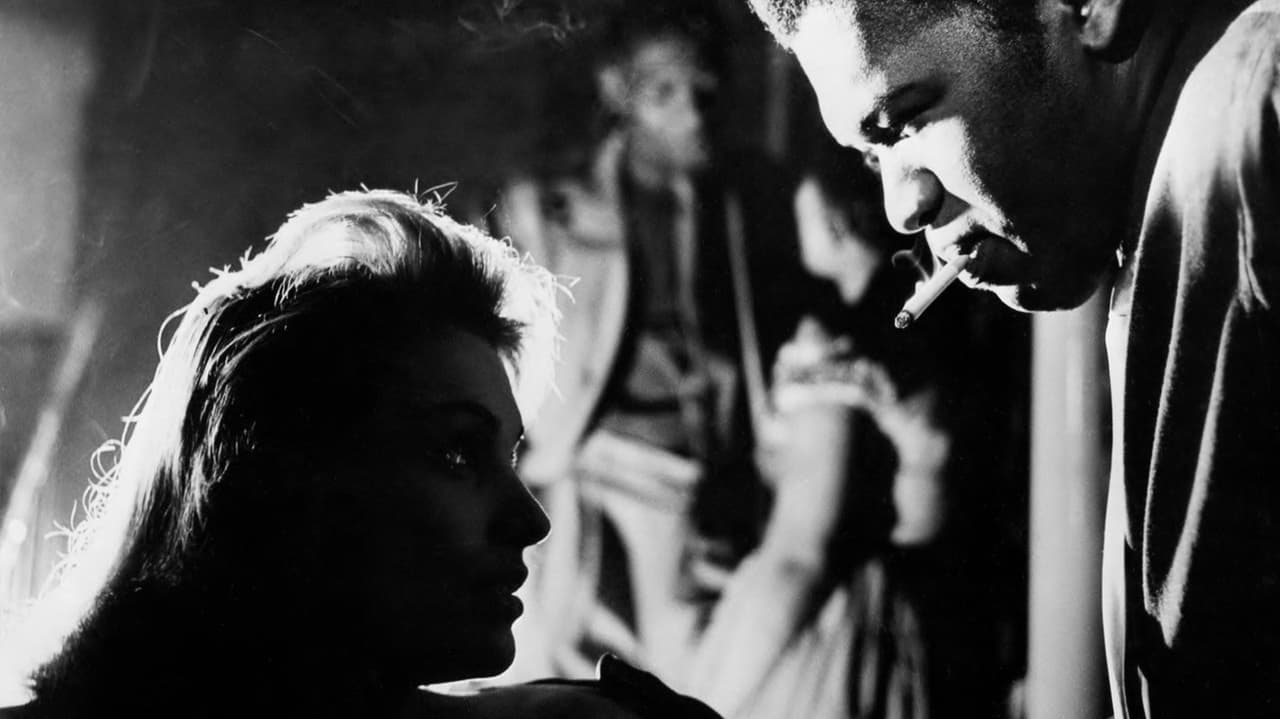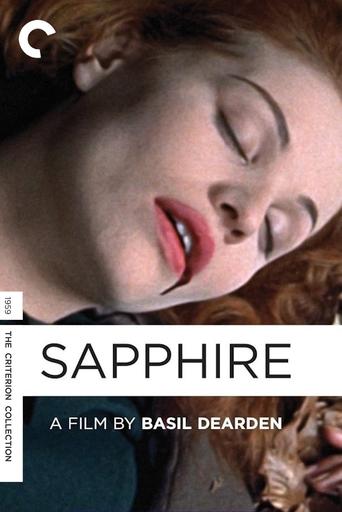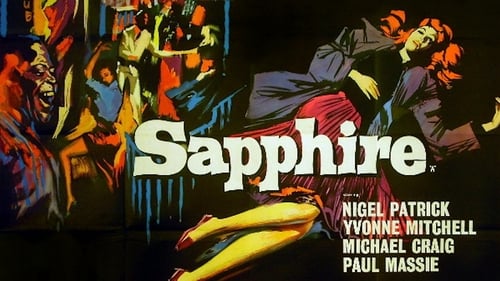


****SPOILERS*** Murder in 1950's London England that turned out to have deep racial overtones in who the victim was. Found with her throat slit in a deserted park the lily white looking Miss. Sapphire Robbins, Yvonne Buckingham, is soon to be discovered to be black in her Negro bother Dr. Robbins,Earl Cameron, showing up at the police station to identify her. This throws the whole case into limbo in that it was very probably her being discovered to be black not white that lead to her murder! It's Sapphire's white boyfriend David Harris, Paul Massie, who becomes the #1 suspect in her murder who was planning to marry her which at the same time could disqualify him from his hard earned scholarship to attend Oxford. That for not only being married by marrying someone outside his own race!As police superintendent Robert Hazard, Nigel Patrick, and his sidekick inspector Phil Learoyd,Michael Craig, check out where Sapphire spent the last few hours of her life they soon realize that those of the black community in the night and dance clubs that she spent her time in knew that she was black or one of them! And her about to marry a white man, David Harris, is what may have triggered a black boyfriend of her to murder Sapphire in a jealous and violent fit. As for the devastated David Harris he seemed to know the reason why Sapphire was murdered and even more important who murdered her! But in is keeping his mouth shut he may very well ends up paying with his life, by being arrested convicted and hanged, for it!****SPOILERS**** Down to earth and not so self conscious and apologetic of race issues, like later likewise movies about race, "Sapphire" sticks more to finding Sapphire's killer then trying to make a politically correct case out of it. There are a number of black suspects, who were anything but boy scouts or altar boys, also involved in Sappire's murder who for the most part were shown to have deep seeded racial prejudices as well. Not only against whites like David Harris and the white police but against Sapphire herself. For the "crime" of passing herself off as white and planning to marry a white man making the reason, in racial terms, for her murder cut both ways! The film didn't have the usual cop-out ending that you would have expected in Sapphire's killer being both close to home and at the same time it wasn't race that was the main reason for murdering her. But mostly for status in the community and economic freedom & security instead!
... View More"Sapphire" is not "black" but a white woman of mixed ancestry. Claiming that a person who is physically white is really "black" is the equivalent of saying that black ancestry is super-inferior. Morally, it's no different from calling a Jew a "non-Aryan." I found the film to be racist and insulting, an ode to the myth of white racial "purity." I had the impression that the film makers were telling the audience that Sapphire and her unborn child had to die in order to prevent her from destroying alleged white racial "purity" by marrying a "pure" white guy. I also found it significant that Sapphire's "pure" white fiancé was such a weakling. The film makers seemed to be implying that the "tainted" Sapphire was too inferior to attract anyone but an "inferior" white man. The fact that the "hero" detectives are constantly denouncing Sapphire as "coloured" and proclaiming her unfit to be "white" tells you about the racism that seemed to motivate the people who produced this film.
... View MoreSo far during this year's Black History Month, I've been reviewing American films. What I'm commenting on now took place and was filmed in Britain. In this one, a Sapphire Robbins (Yvonne Buckingham) is found dead at Hampstead Heath. Superintendent Robert Hazard (Nigel Patrick) and partner Inspector Phil Learoyd (Michael Craig) investigate who done it. Her boyfriend David Harris (Paul Massie) and brother, a Dr. Robbins (Earl Cameron) are also interested though the former has his own secrets to hide along with his sister Mildred (Yvonne Mitchell) and possibly their parents (Bernard Miles and Olga Lindo). By the way, since the doctor has dark skin and his late sister is light, there's also a racial aspect involved...When I first watched this on American Movie Classics back in the mid '80s (by the way, this was the first I actually watched on that channel), it was intriguing enough for me that I would have loved to have seen it again much sooner than just now on YouTube if I had the chance. Now that I indeed have, it's even more compelling as both a mystery and pretty intense drama on the social tensions that I'm sure were very prevalent during that time in England. Especially considering the way characters of both races reveal their prejudices in both subtle and blatant ways. And besides Cameron, other people of color worth noting that appeared here include Gordon Heath as Paul Slade, Harry Gaird as Johnnie Fiddle (who is identified among other Johnnys at a bar), Orlando Martins as a barman, and Robert Adams as Horace Big Cigar. Really, this was a fine British drama that greatly tackled the way prejudices of most kinds were displayed there. P.S. I didn't know about the stereotype of cops having big feet there. Sure beats the one about donuts here!
... View MoreMy summary does double duty as a description of the eponymous character, a very light-skinned West Indian girl 'passing' for white and the film itself, a low-key exploration of racial tension in pre-Swinging Sixties England. In terms of police-based drama we were still in the era of Dixin Of Dock Green with the more realistic Z Cars and The Sweeney still to come so that Nigel Patrick's Inspector comes across as a gentleman detecting as something of a hobby, an exact counterpart, in fact, of Raffles, the gentleman crook. The teenagers are unbelievably polite, dress conventionally and are unable to field a single tattoo, piercing, stud or pin in a college full whilst the prejudice is recorded mutely rather than trumpeted. Despite the odd and obligatory red herrings the real killer is not difficult to spot and the motive is all too plausible. Patrick takes the acting honours as one would expect with Michael Craig contributing his usual hundredweight of balsa wood but all in all it is both interesting and satisfying.
... View More